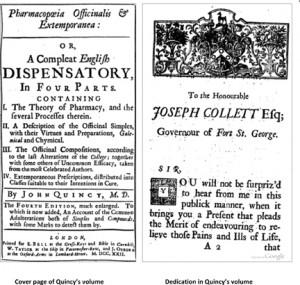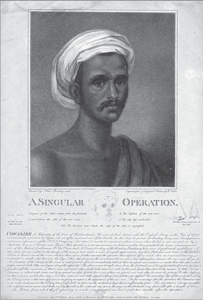Registered with the Registrar of Newspapers for India under R.N.I 53640/91
Vol. XXVI No. 10, September 1-16, 2016
Our readers write
Observant reader
In ‘Quizzin’ with Ram’nan’ (MM, August 16th), Question number 8 reads as: “On July 17th, the youngest Prime Minister (aged 37) of the country was sworn in. Name him and the nation.”
Actually it was Pema Khandu who was sworn in as the Chief Minister of Arunachal Pradesh on July 17, 2016.
S. Hariharan
shariharan96@hotmail.com
Quiz master Ramanan writes:
Mea culpa! The observant reader is correct. It should have been Chief Minister and not PM as given by me.
Father remembered
This is with reference to the Question 9 in the quiz in MM, July 16th.
The question relates to the presidentship of the CACCI – Confederation of Asian Chambers of Commerce and Industry.
Prior to Lakshmi Mittal, it was held by my father Dr. D.C. Kothari, who spearheaded this body in the late 1980s.
He was also president of FICCI in 1970, he was also the only second Indian, and to date ever to be ISO President – 1981-1983. This is the prestigious International Standards Organisation (of ISO 9000) fame.
Maya D. Kothari
kotmaya@gmail.com
DPI Campus buildings
As I read the report about the DPI’s Campus (MM, August 16th) remembered my first visit there in 1949 as a student of Teachers’ College. There used to be a lovely garden in the front (it has disappeared long ago to make way for the parking of vehicles. There were three buildings in the huge campus besides the MLS Library Building.
Behind the main building was the annex which the correspondent refers to as housing CARE. The quarters for the DPI was at the far end, on the banks of the canal. When N.D.Sundaravadivelu became DPI, he preferred to live in his own house. S.V.Chittibapu, the then Joint Director, occupied the mansion. When the State Council of Educational Research and Training was established, the DPI’s quarters became its office, in spite of its unsuitability.
The first new construction in the campus was the office of the Examination wing of the Department, later to become a separate Directorate in 1968.
At the far end on the banks of the canal, were some old buildings which were rumoured to be the barracks of Lord Clive. Now a good number of buildings have come besides a Hindu Temple, a small church and prayer hall. The old world charm has been completely lost.
Similar seems to be the fate of the DMS Campus.
S.S. Rajagopalan
30, Kamarajar Street, Chennai 93
Madras – in a dedication & a news report

Dr. A. Raman writing from Orange, N.S.W. Australia sends us a couple of his findings which he says should interest readers of Madras Musings particularly during “The Madras Week period”.
During my recent research on the evolution of pharmacopeia in India (and Madras), I chanced upon the Pharmacopoeia Officinalis & Extemporanea by John Quincy, M. D., published in London, in 1722. I was pleasantly surprised to read the dedication note (essay?) by Quincy in that volume. He dedicates this pharmacopoeia to Joseph Collett of Madras. Those interested in knowing more about John Quincy are referred to the Dictionary of National Biography (1885-1900), vol. 47, https://en.wikisource.org/wiki/Quincy_John_ (DNB00).
Dedication by Quincy to Collett runs to four pages. The text is interesting from the perspective of its wordiness and flamboyance. To illustrate my point, I quote a short section from his dedication ‘essay’ here:
‘… We are Inhabitants on a transient Syftem of Matter, that is neceffarily, from the conditions of its Exiftence, as liable to Accidents and Decays, as it is to a total Diffolution. And the Labour I have been at towards making eafy fuch Inconveniencies, I cannot but with a particular Satisfaction make you Tender of, as this great Diftance. You have combated with all the Inclemencies and Tempefts of Seas and Climates, to fill up that Station and Meafure of Duty, affign’d by Providence: and with a pliable and well-govern’d Conftitution, rather than a ftrong one, have you been preferv’d through a Life of Toils and Danger. …’
Note: read the above replacing ‘f’ by ‘s’ wherever necessary.
Many of us would be familiar with the name, Joseph Collett, who was the President of Fort St. George in 1717-1720. Quincy considered Collett his mentor and the dedication of his book to Collett, therefore, does not surprise. Notable is that John Quincy had never been to Madras. Most of us should be familiar with the suburb ‘Collettpet’ in Tiruvotriyur, which is named after Joseph Collett.

Many of us, I am sure, would have known of the Madras Gazette started as a weekly by Robert Williams (Company Solicitor) to compete with the Madras Courier in Madras. I found the masthead of this weekly in the British Library website and am sharing it here with Madras Musings readers. The date in the masthead indicates that the Madras Gazette was operational in 1809. Several library records indicate the starting date of this weekly as 1795. But I found that a landmark event in Indian medical practice (not done in Madras) was reported first in the Madras Gazette in 1793. So I argue that this weekly functioned at least from 1793, if not earlier. The citation ‘volume XV’ in the reproduced masthead also reinforces the view that the start date was 1793 and not 1795.
The Madras Gazette (1793) reported a fascinating case of the earliest rhinoplasty (nasal reconstruction) by a Vaidyan following Susruta’s surgical procedures, done on Cowasjee (Kawasjee) in Poona in 1792. Cowasjee was working as a cart man for the British army and, during the Mysore battle, Tippu’s army commanders sloughed off Cowasjee’s nose. Although this story is widely alluded to in various medical journals and text books, details of this reconstructive procedure done on Cowasjee in 1792 was reported only in Madras Gazette only (see the original figure published in the Madras Gazette, 1793).
The story goes thus: Thomas Cruso and James Findley, Bombay surgeons and Lt Col Ward witnessed the procedure carried out by the Poona Vaidyan. A wax model representing a nose was placed on the forehead (of Cowasjee) and a line was drawn around it. The Vaidyan cut around that line except a strip between eyebrows. After other surgical procedures, the incised skin flap was placed on the reconstructed nose. Curious that the skin flap securing was done by applying linen strips smeared with ‘cement’ made of ‘Japan earth’ and water. In the image of Cowasjee, a faint, angular line on his forehead can be seen. Obviously all was well with Cowasjee and he became a medical icon, widely spoken about in various then functional intellectual journals, including those of medicine all over the world!
Dr. A. Raman
araman@csu.edu.au

